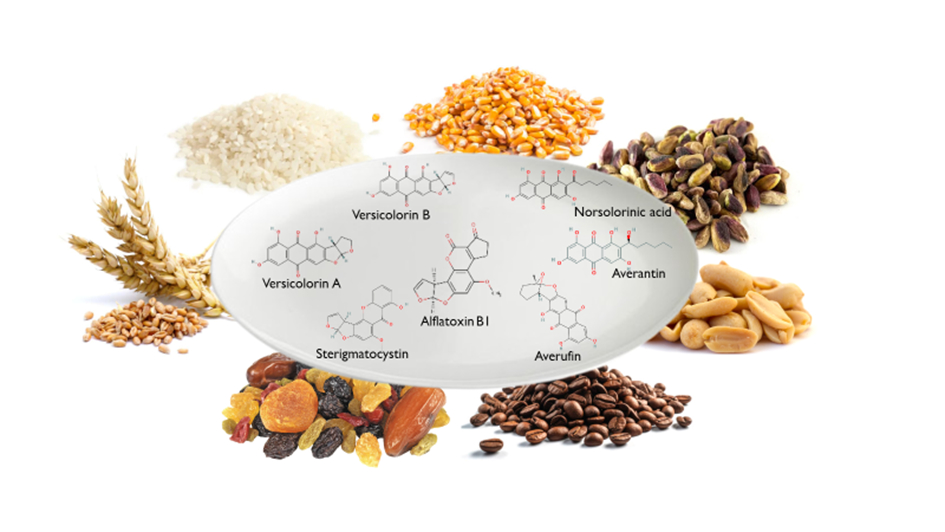Mycotoxins, toxic secondary metabolites produced by fungi, pose a significant risk to human and animal health due to their toxicity and the contamination of crops during both cultivation and storage. Approximately 80% of the world’s crops are contaminated with mycotoxins, leading to substantial economic losses. Among these, Aflatoxins are particularly dangerous, with Aflatoxin B1 recognized as the most potent naturally occurring carcinogen.
Aflatoxin B1 is mainly produced by Aspergillus parasiticus and Aspergillus flavus. Biosynthesis of Aflatoxin B1 is a complex process involving several enzymatic reactions, and at least 15 intermediates have been identified in this pathway. Some steps require the accumulation of specific intermediates to proceed to the next enzymatic stage. Additionally, because the conversion rate is never 100%, residual precursors remain untransformed into Aflatoxin B1. Thus, it is possible that many of these precursors will be found as co-contaminants along with Aflatoxin B1.
Moreover, some of these compounds are produced by non-aflatoxigenic fungal species such as Aspergillus versicolor and Aspergillus nidulans. These fungi have been found to contaminate various food products, including cereals, nuts, and dried fruits.
A critical structural feature of Aflatoxin B1, the double bond at the 2-3 position of its terminal furan ring, is essential for its mutagenic and genotoxic activity. Other precursors in the Aflatoxin B1 biosynthesis pathway, such as Sterigmatocystin and Versicolorin A share this structural feature and are consequently also mutagenic and genotoxic. However, research data indicate that Sterigmatocystin and Versicolorin A mechanisms of toxicity are more complex than that of Aflatoxin B1 and require further investigation to be fully understood.
Currently, the toxicity of these precursors, both individually and in combination with Aflatoxin, is not well understood. The interaction between these compounds may result in synergistic effects, suggesting that contamination with Aflatoxin B1 will pose additional risks when combined with its precursors. This PhD project at INRAE (France) aims to address these gaps by investigating the toxic effects of Aflatoxin B1 and its precursors, both alone and in combination. By conducting a comparative study of their mechanisms of action and potential interactions, this research will provide critical data for improving risk assessment and food safety regulations. Ultimately, the project seeks to enhance our understanding of the combined toxicity of these mycotoxins and their impact on public health.

